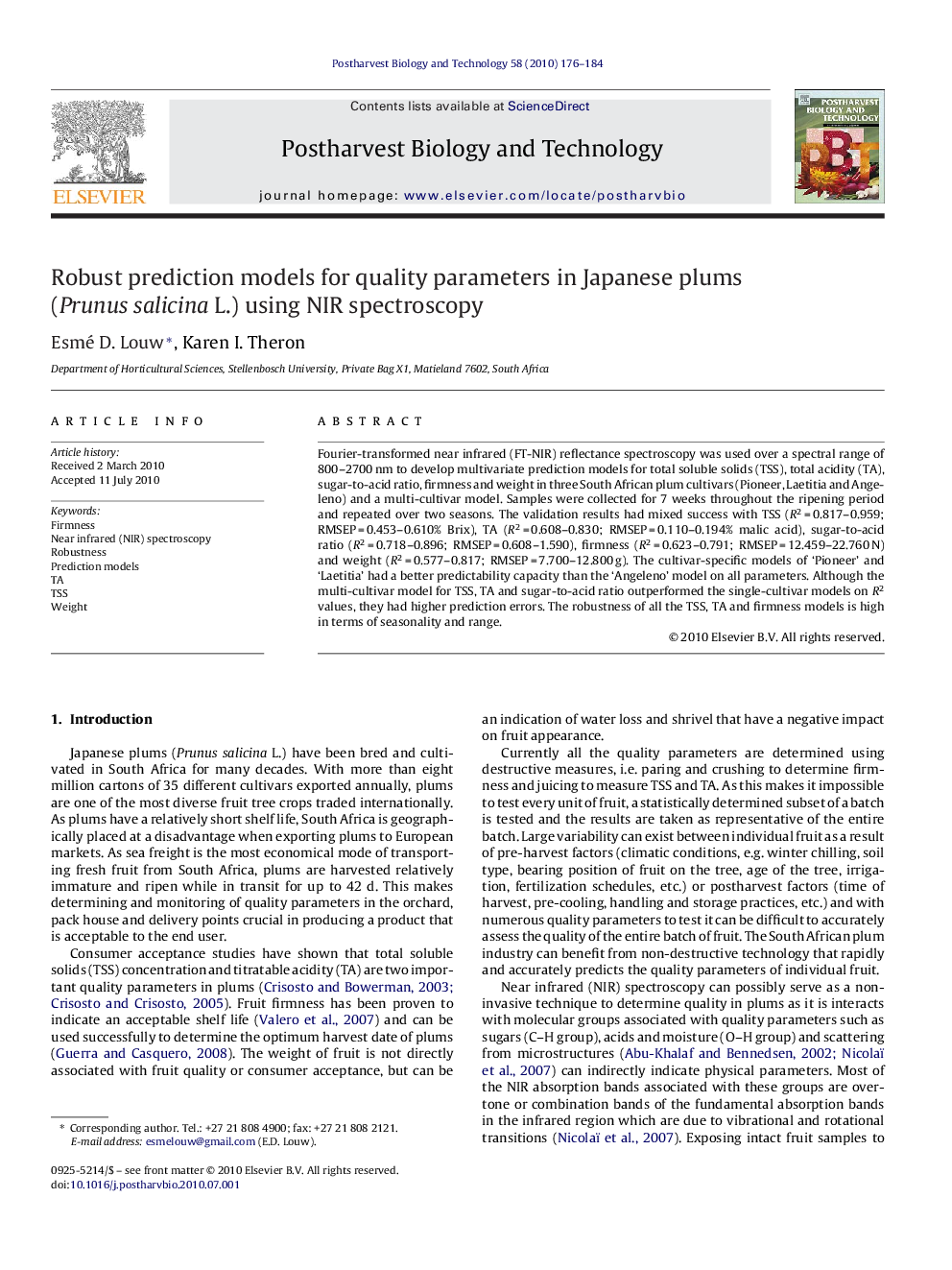| Article ID | Journal | Published Year | Pages | File Type |
|---|---|---|---|---|
| 4519088 | Postharvest Biology and Technology | 2010 | 9 Pages |
Fourier-transformed near infrared (FT-NIR) reflectance spectroscopy was used over a spectral range of 800–2700 nm to develop multivariate prediction models for total soluble solids (TSS), total acidity (TA), sugar-to-acid ratio, firmness and weight in three South African plum cultivars (Pioneer, Laetitia and Angeleno) and a multi-cultivar model. Samples were collected for 7 weeks throughout the ripening period and repeated over two seasons. The validation results had mixed success with TSS (R2 = 0.817–0.959; RMSEP = 0.453–0.610% Brix), TA (R2 = 0.608–0.830; RMSEP = 0.110–0.194% malic acid), sugar-to-acid ratio (R2 = 0.718–0.896; RMSEP = 0.608–1.590), firmness (R2 = 0.623–0.791; RMSEP = 12.459–22.760 N) and weight (R2 = 0.577–0.817; RMSEP = 7.700–12.800 g). The cultivar-specific models of ‘Pioneer’ and ‘Laetitia’ had a better predictability capacity than the ‘Angeleno’ model on all parameters. Although the multi-cultivar model for TSS, TA and sugar-to-acid ratio outperformed the single-cultivar models on R2 values, they had higher prediction errors. The robustness of all the TSS, TA and firmness models is high in terms of seasonality and range.
